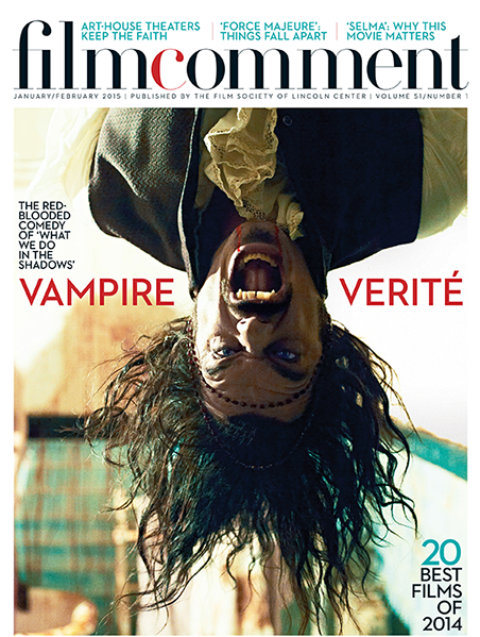
When a muezzin call echoes over a black pre-title screen, you know you’re engaged with that top-shelf Hollywood product, the 21st-century war film. Beneath the amplified Arabic chant, a subsonic throb morphs into the rumble of an Abrams tank that appears on screen, up close, from the perspective of the Marines moving warily alongside it down a debris-strewn city corridor, preparing to breach a cinderblock housing complex. Street tension cuts to watchful repose on a nearby rooftop where Navy Seal Chris Kyle (Bradley Cooper) cradles a long-barreled, sound-suppressor-tipped M40 rifle.
Grungy, bearded, with a dead-lifter’s brawn, NASCAR fan shades, and mud-colored backward ball-cap, Kyle lies motionless, sniffs loudly once or twice, and scans the street below, his bright blue eyes all but popping out of the monochrome palette with which the film renders the blasted war zone—highlighting key assets of a skill set the military credits with killing more people than anyone in its history. As Kyle gives soft, Texan-Jack-Webb reports on his radio, his scope picks up a chador-cloaked woman and a boy walking into the rubble-strewn path of the column. The woman in his cross-hairs produces a grenade and hands it to the child, Kyle’s supervisor radios that he’ll have to make the call himself, and we hold our breath—for a half-hour of expository flashback.
In the 15 days that elapsed between losing director Steven Spielberg and acquiring Clint Eastwood, Team American Sniper did some psychic realignment (from kickass epic to soulful profile in courage), then cast, shot, edited, and delivered a gangbusters hero’s encomium to a man who was shot to death by a troubled vet shortly after his first phone call with producer-star Bradley Cooper. That’s what the military calls a Quick Reaction Force: Eastwood, Cooper, and screenwriter Jason Hall deliver everything this tale requires, without quite squelching the ambient pathology surrounding it.
Any project begun with an avowed commitment to honor a slain war hero will round off some rough edges. Any such film directed by Clint Eastwood risks becoming a Fallujah-set version of Shane. Things seem headed that way after we jump from the rooftop cliffhanger to a bucolic Texas boyhood scene: young Chris bags his first buck, his dad kneels to say “That’s a fine shot, son. You’ve got a gift,” then delivers a moral lesson at the dinner table: “There are three types of people in this world: wolves, sheep, and sheepdogs.”

Creation myth established, we move briskly through the short-lived rodeo career that gives us our first look at Cooper’s De Niro-to-LaMotta transformation: bulky cowboy walk, finely delineated Texas twang, his light-blue eyes—which read as amped-up or tweaked in previous roles—softened into a gentle perceptiveness that belies his bravado. A TV report on a bombed U.S. embassy moves Kyle to enlist for Navy Seal training in California, where he impresses his rifle-course instructors and teasingly charms a hard-looking beauty named Taya (a brunette Sienna Miller), whom he marries just before being re-deposited onto the opening scene’s rooftop.
Using Kyle’s rifle scope for his POV, Eastwood begins a film-length dialectic with a visual conceit used in countless spy, crime, and action thrillers (including Eastwood’s most famous role: a cop pushed beyond legal limits to stop a psycho-killer… sniper). With a soft exhalation, Cooper shoots first the boy, then the woman attempting to complete his pass, the grenade exploding harmlessly. When a jarhead beside him slaps Kyle’s shoulder in congrats, Cooper tersely backs him off, registering an ambivalence conspicuously absent from Kyle’s account of the same incident.
This sobering moment begins Kyle’s sequential tours of Iraq hot spots Fallujah, Ramadi, and Sadyr City, where in 2008 he makes an impossible, record-breaking shot from 2,100 yards, the round traveling toward its target for some five seconds of screen time as if, I daresay, guided by Divine Forces. The actual RPG-wielding target is replaced here by Kyle’s doppelgänger, Syrian Olympic marksman Mustafa (Sammy Sheik), who earlier foiled Kyle’s attempt to save an informer from a black-robed, power-drill-wielding Qaeda enforcer known as the Butcher (Mido Hamada). Frustrated by his own powerlessness and the casualties that the less tactically adroit Marines take during raids, Kyle leaves his rooftop aerie to lead the soldiers in what becomes the film’s most thrilling section. Roving the ancient apartment complex’s shadowy corridors, the SEAL-led Marines stake out lairs and interrogate suspects as they hunt for the Butcher and his al-Qaeda leader, Abu Musab al-Zarqawi. Here, the 84-year-old Eastwood shows a command of complex, large-scale action setpieces to rival nearly any director in the action-film game, the film’s perspective switching from that of the foot soldiers to the snipers targeting them from above.
As the ferocity of his missions escalate, Kyle’s home life shows relatively minor stress fractures. “Even when you’re here, you’re not here,” Taya over-explicates, after suffering a few cruel-and-unusual satellite calls from the midst of firefights. The coming-home plotline feels cursory and underwritten. Responding to any query into Kyle’s emotional state with bright-eyed monosyllables, Cooper gives denial a vividly fresh face, but the characters’ troubling post-battlefield behavior barely exceeds a blunted affect, and his readjustment to suburban home life is mighty speedy for someone who estimates he killed about 100 more than the 160 that were confirmed. In Unforgiven (92), Eastwood explored the wounds that killing inflicts on killers, which post-combat clinical psychiatrists now define as “moral injury.”
As Chris Kyle, Cooper beautifully realizes a living, breathing gentle-giant of a human being; but as a fictional bomb-disposal soldier, Jeremy Renner let The Hurt Locker share truths about war that American Sniper is too respectful to explore. In the book American Sniper, the author does share one regret that haunts him: “I only wish I had killed more.”








